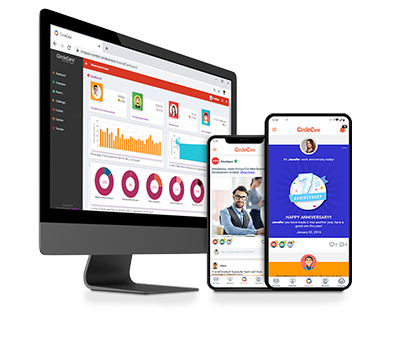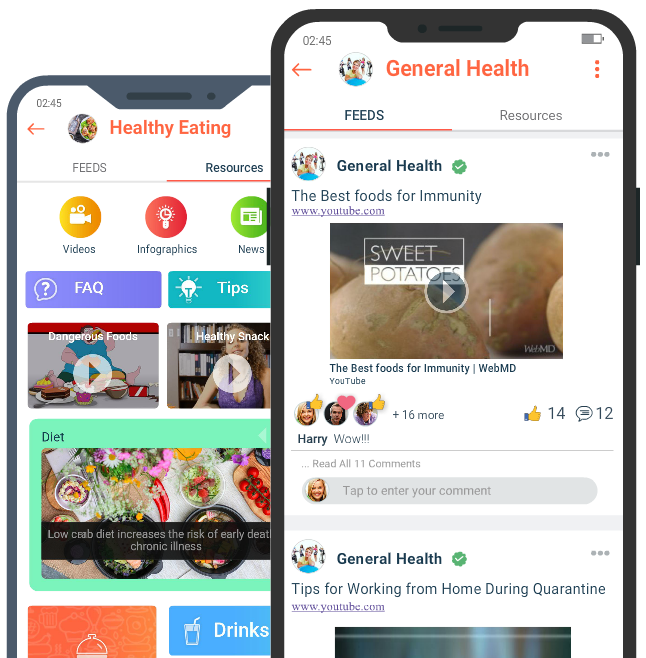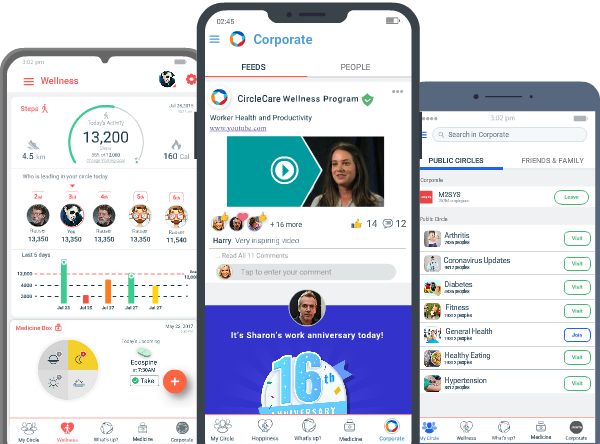Coronavirus: 5 ways to engage employees when going remote
Before the coronavirus outbreak began to unfold, “43% of US employees worked remotely at least some of the time,” according to Gallup. Yet, the coronavirus has now forced many companies to switch to virtual work, and others to adopt work schedules that limit the number of people in the on-site location.
Your employees may struggle as worries about childcare, employment, or illness mount. This unique situation can add complexity to remote work along with other distractions.
To support your employees and partially alleviate some of the anxiety they may be experiencing, try these five ideas to connect your on-site employees and remote staff while boosting productivity and engagement.

Corporate Wellness App
CircleCare

1. Provide Extra Support
A supportive work culture is important even when things are going well. But, with the added stress and uncertainty about coronavirus, it makes it essential. If your staff is worried about workplace policies or other concerns, they disengage.
Providing extra resources addresses their issues and empowers employees to take control.
Try these three tips:

- Post phone numbers and email addresses of managers/leaders on all employee communication channels.
- Adopt an app for creating private health & wellness communities where everyone can support, share experiences and stay connected with each other.
- Give links to information about benefits, and other updates.
- If available, share information for people experiencing anxiety or other mental health concerns.
2. Host Weekly Video Conferences
Video conferences work well for both remote employees and on-site workers practicing social distancing. A video-enabled meeting creates a sense of community and gives teams much needed face-to-face time.
The best way to increase engagement during video meetings is to start with an agenda. Allow time to go around the room and give all employees a chance to speak. Plus, you may want to provide extra flexibility and tolerate some background noise.
Many employees may avoid joining a remote session because of other family members in their home. Encourage all employees to participate during this challenging time, but don’t make it mandatory or overdo it with more than one or possibly two video meetings a week.
3. Use technology to build a sense of community
Working remotely does keep employees from gathering in a conference room to celebrate a birthday or stopping by their coworkers’ workspaces to recognize significant milestones. But you can offset the void of cubical conversation while connecting employees by:

- Purposefully leaving space at the start of calls or video chats for small talk, to fill the gap from the lack of hallway banter
- Providing a private social network where team members can share highlights from their weekends and their top priorities for the week (e.g., a CircleCare corporate wellness group)
- Encouraging team competitions or fitness and other well-being challenges (e.g., a Million Steps Challenge)
- Using Skype or another instant messaging service to spontaneously celebrate team wins, individual achievements, and birthdays and work anniversaries
4. Honor actual office hours and the weekends
Employees who work from home often keep their phone or laptop within reach, as technology has made it easy to check email in seconds. However, just because you find it convenient to catch up on email later in the evening while watching TV doesn’t mean your coworkers or direct reports do.
Refrain from creating an “always on” working environment by clearly communicating expected response times for emails. Or simply delay sending emails until the next day.
5. Keep employees engaged for improve productivity
CircleCare employee engagement apps encourage employees to regularly share and inspire each other to stay mentally refreshed and productive. It allows employees to communicate in a private social feed like environment, so your employees can engage for both work and other fun activities.
Try setting up a fun question challenge specifically for non-work-related interaction. Every day, have an employee such as an office administrator post an icebreaker question. Examples could include “How does your home workstation look like?” or “what is your favorite album of all time?” This will inspire employees to engage in conversation with one another and allow them to get to know each other better.









Pingback:COVID-19: How to Keep Remote Employees Engaged? - M2SYS Blog On Biometric Technology